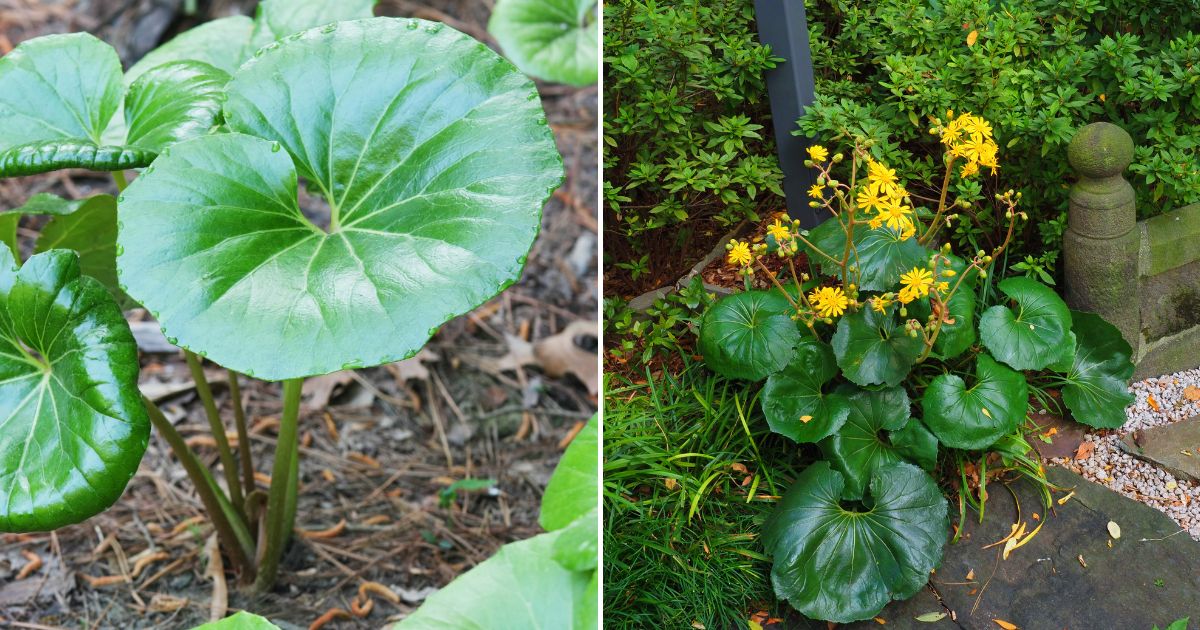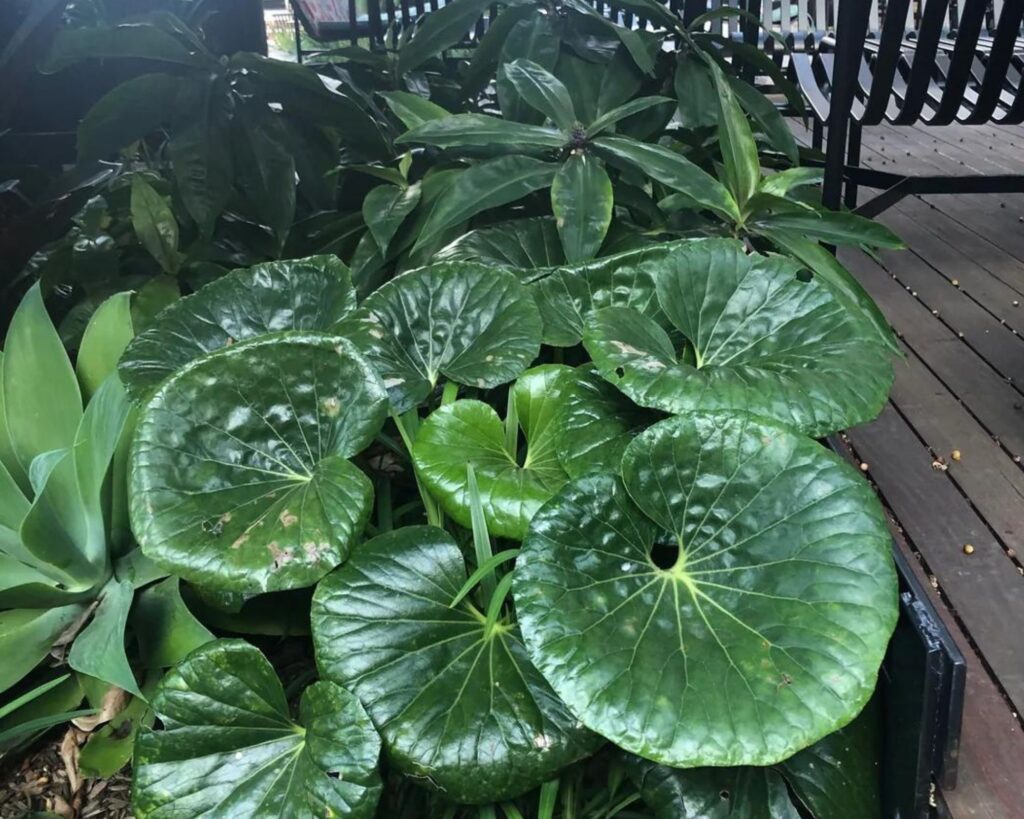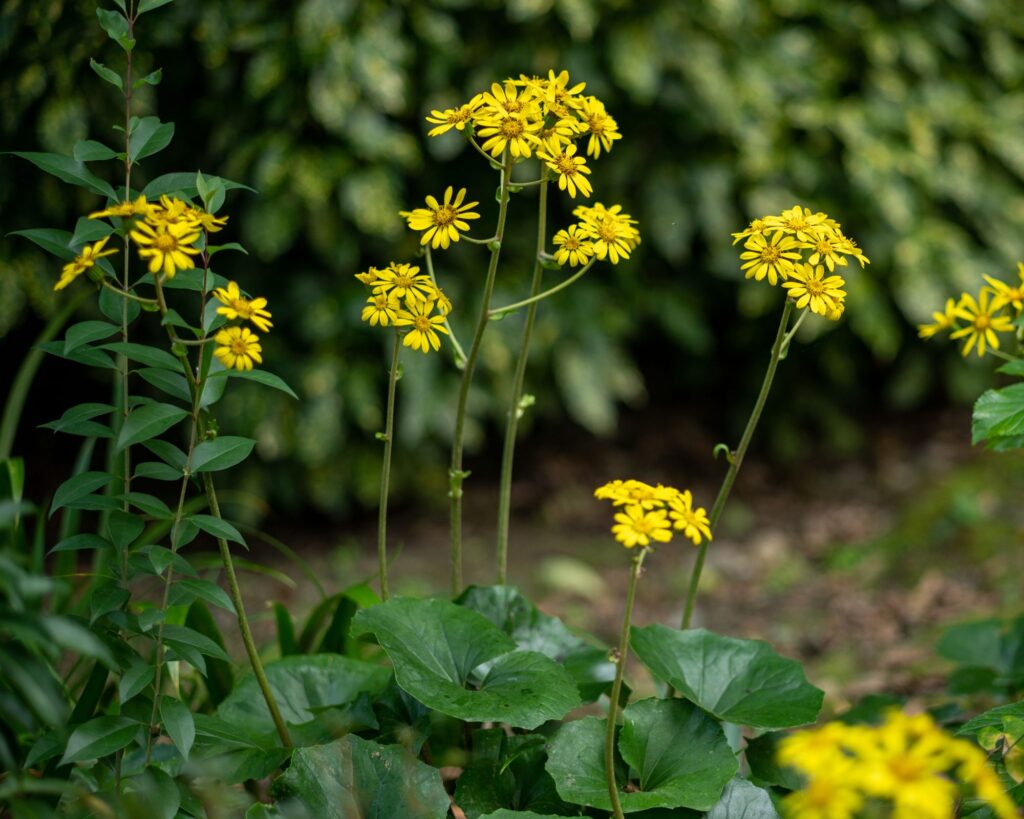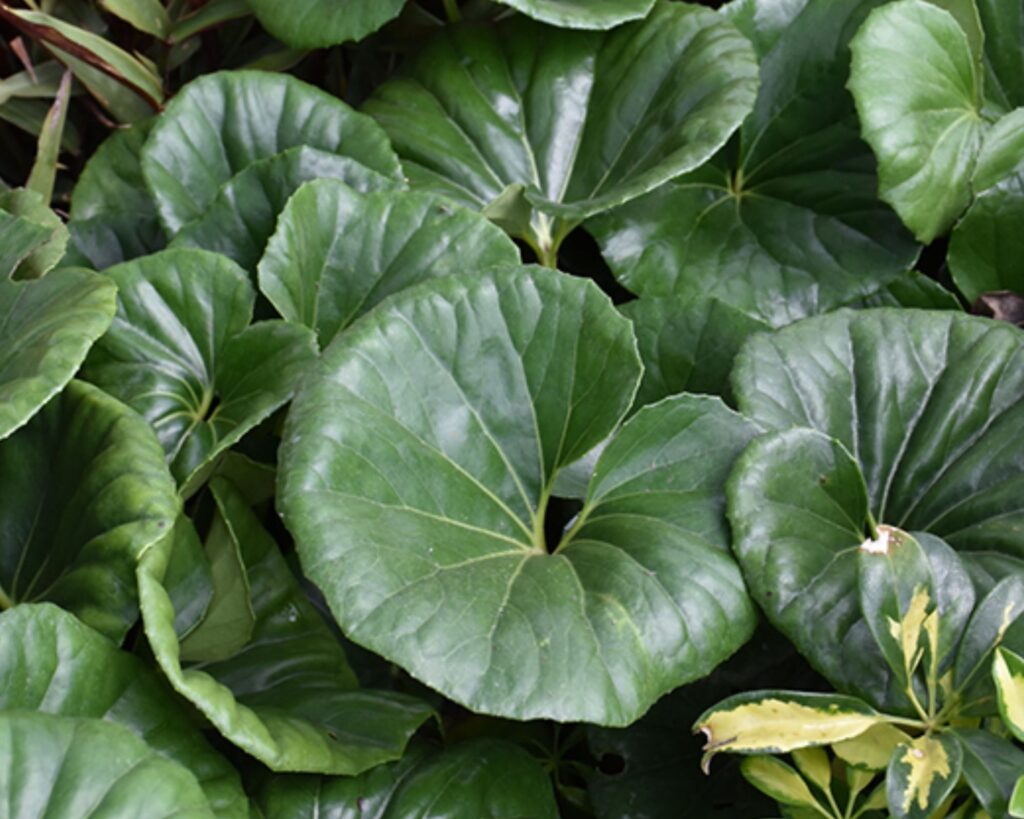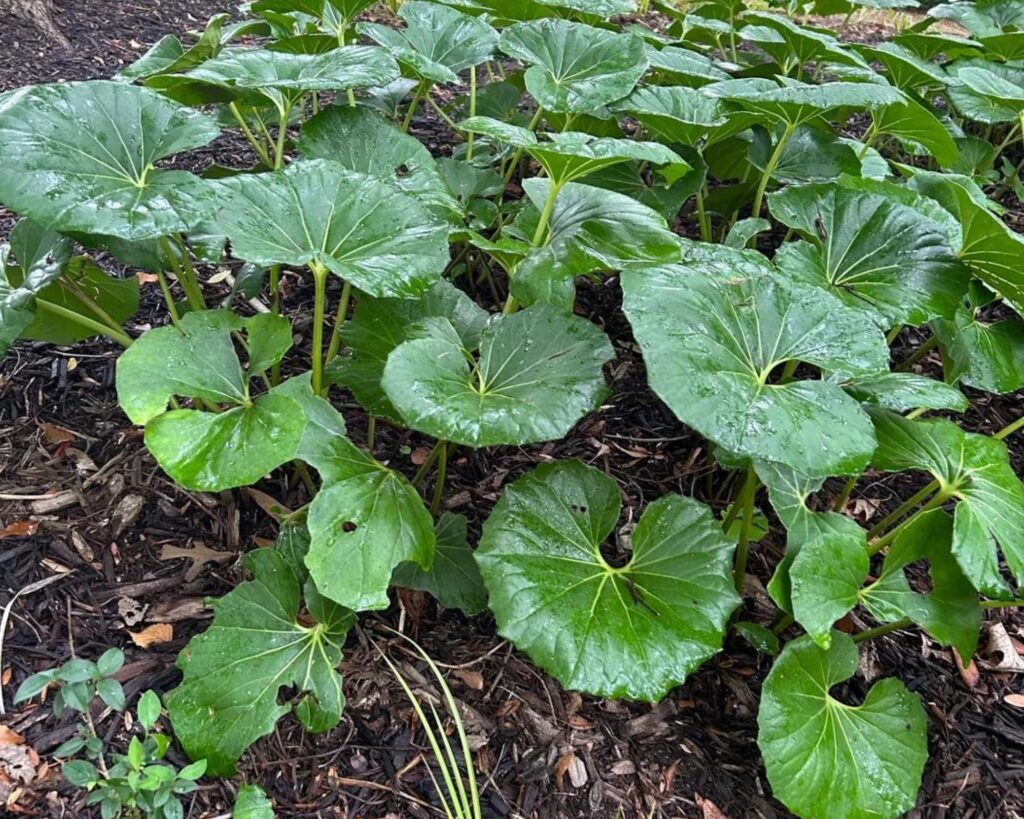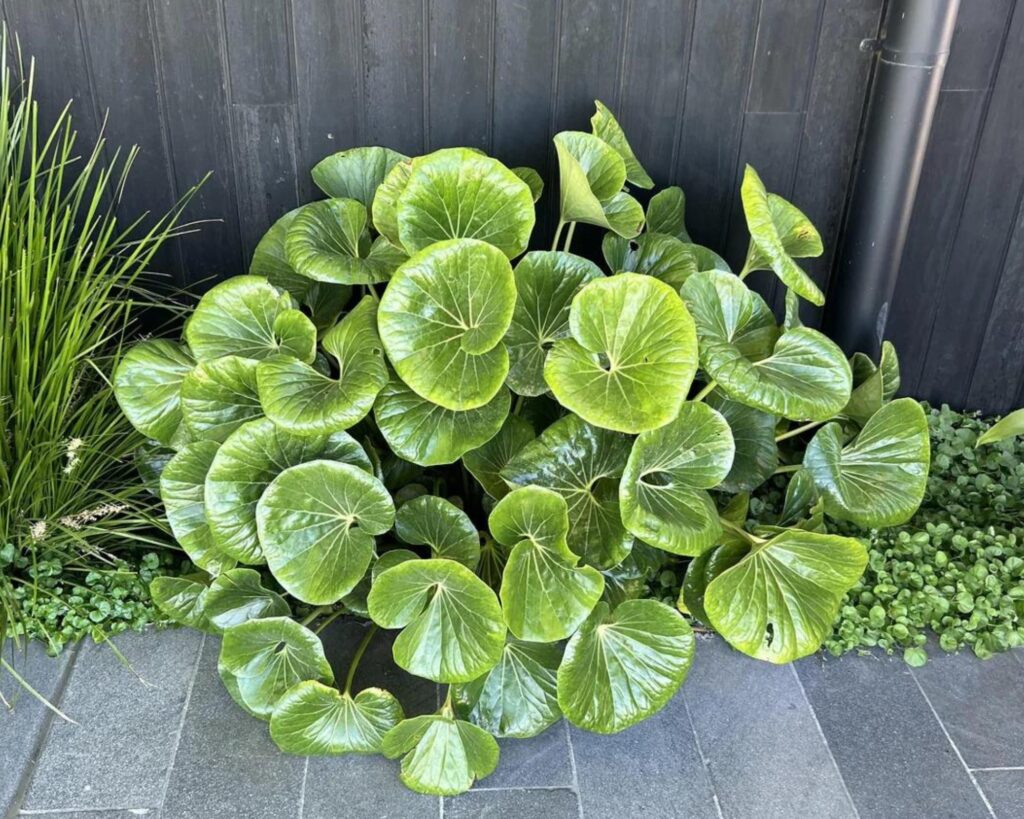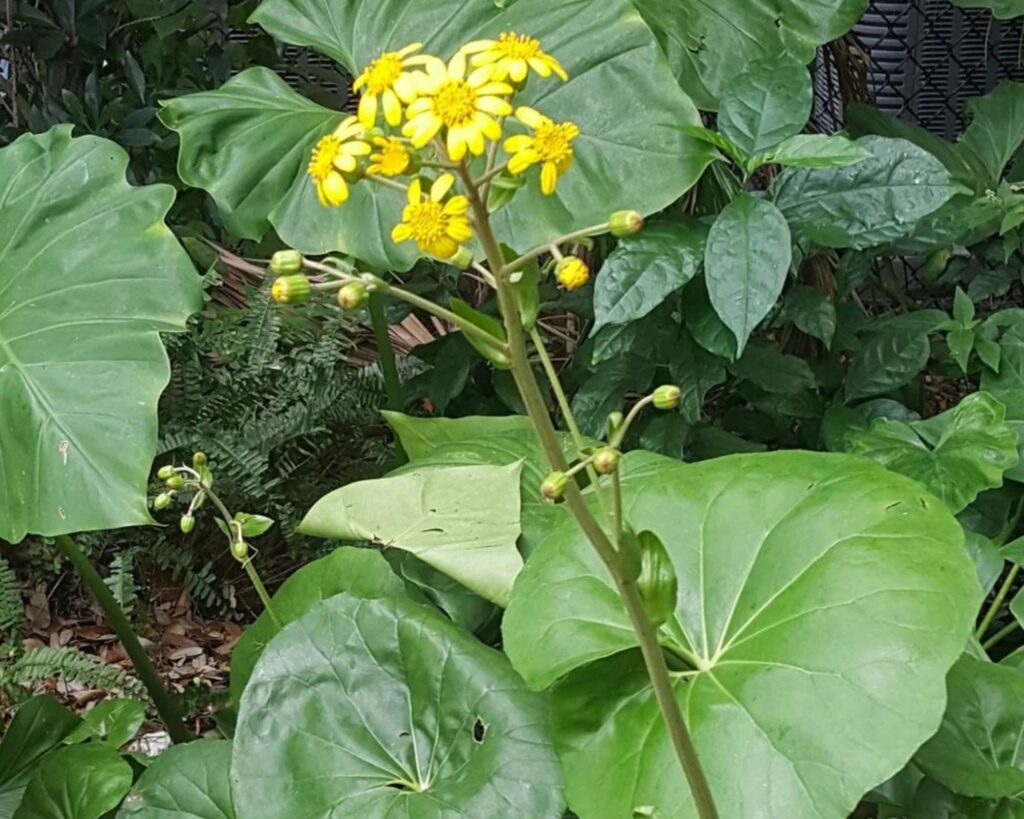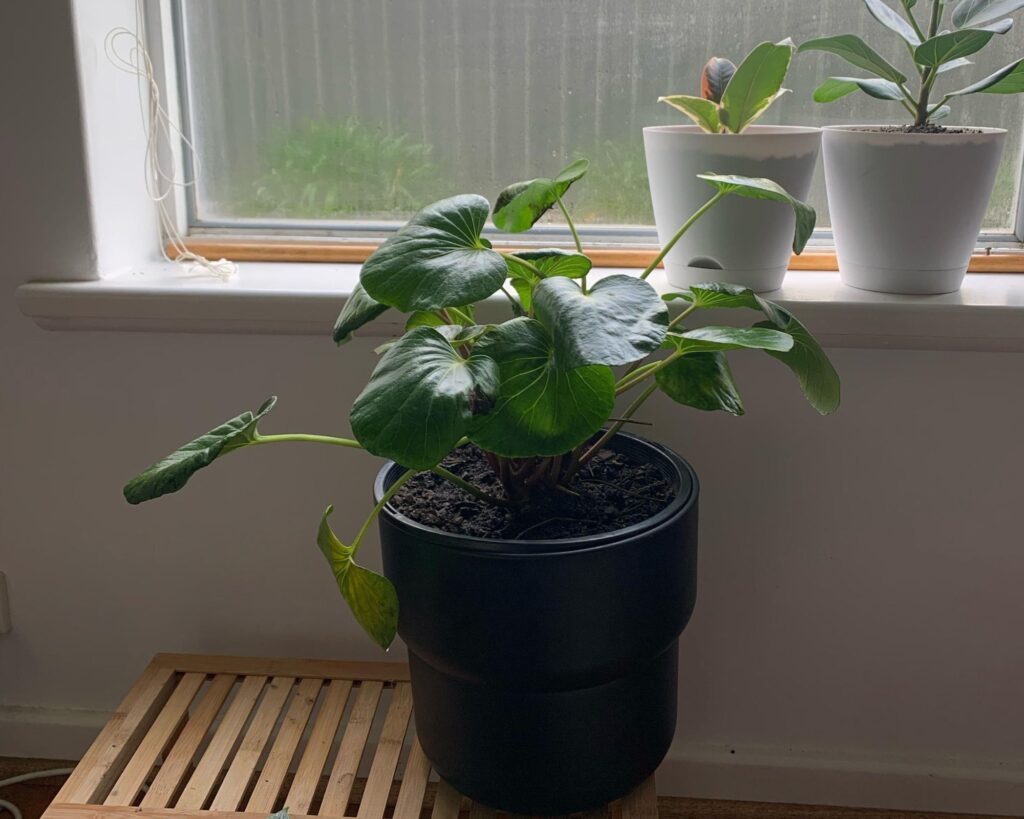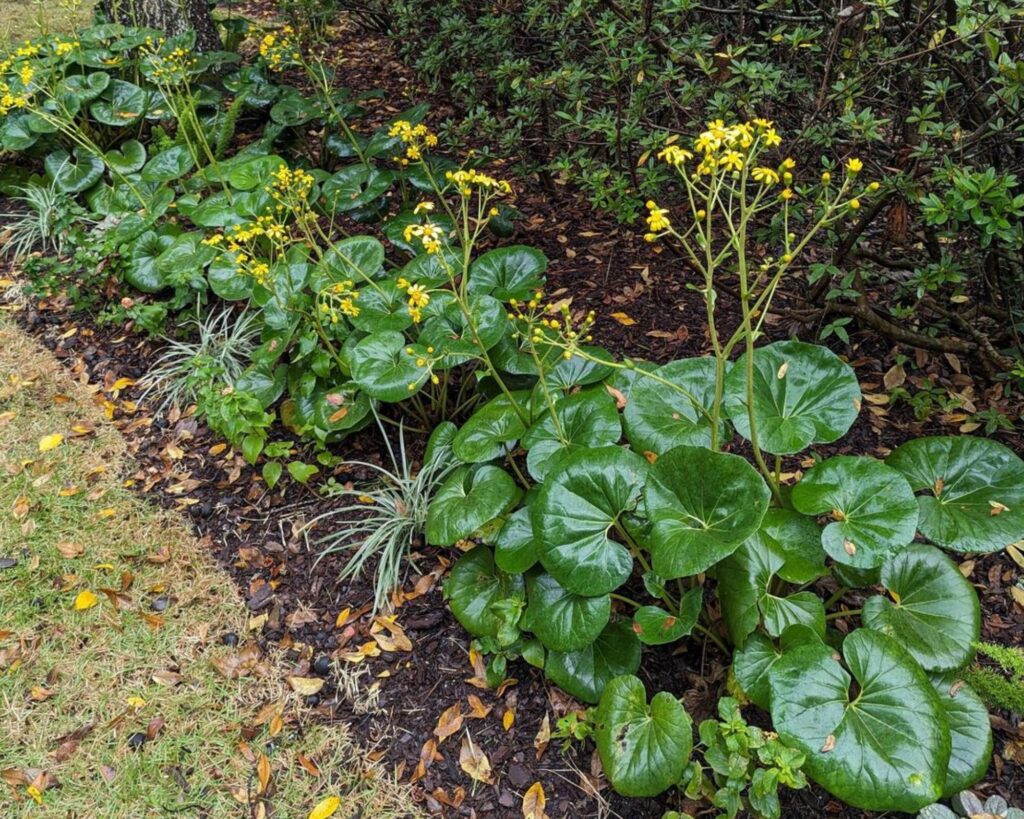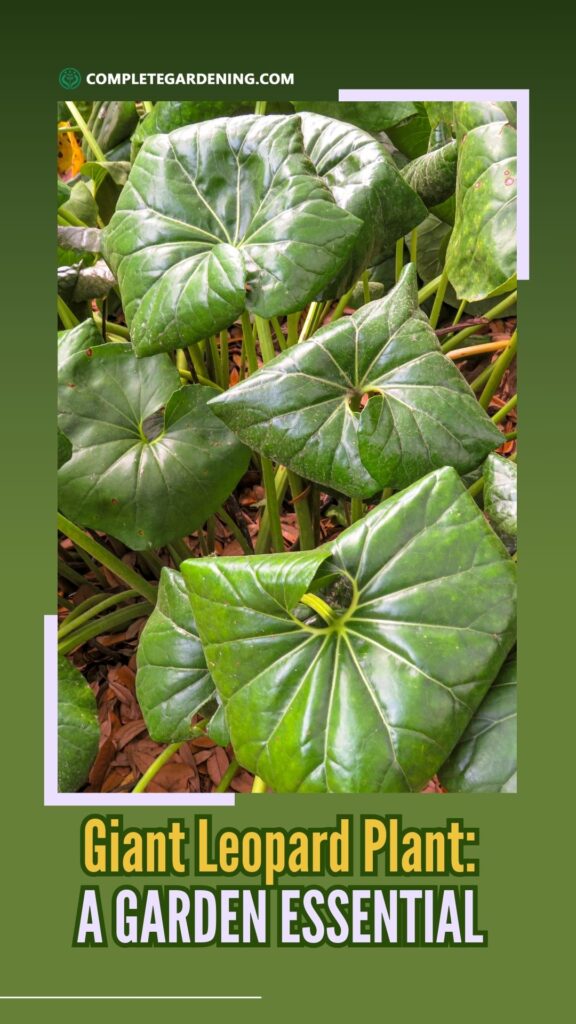If your garden is missing that bold, eye-catching flair, look no further than the Giant Leopard Plant (Farfugium japonicum).
Imagine glossy, oversized leaves that stand out like lush, green umbrellas and striking yellow flowers that light up the garden when everything else fades into the background.
But this plant is more than just a pretty face; it’s the secret weapon for gardeners craving a pop of color and texture without the headache of constant upkeep.
Whether you’re a seasoned green thumb or a gardening novice, the Giant Leopard Plant brings drama and elegance to any space while remaining surprisingly low-maintenance.
Ready to discover why this stunning perennial could be the game-changer your garden needs? Let’s dive in!
Unique Aesthetic Appeal
The Giant Leopard Plant is known for its bold, eye-catching foliage. The plant’s large, rounded leaves can grow up to a foot in diameter and come in various shades of green, often speckled with eye-catching yellow or white spots.
This unique pattern gives the plant its common name, as the leaves resemble the pattern of a leopard’s coat.
In addition to its foliage, the Giant Leopard Plant blooms in the fall with bright yellow daisy-like flowers on tall stems, offering a vibrant contrast to its dark, waxy leaves.
This combination of large, glossy leaves and cheerful blooms makes it a great choice for adding variety and texture to your garden.
A Versatile Plant for Different Garden Settings
One of the best things about the Giant Leopard Plant is its versatility. It can thrive in various garden settings, from shaded garden beds to container plantings.
The plant prefers partial to full shade, making it an excellent option for brightening up darker corners of your garden where many other plants may struggle to survive. It’s particularly well-suited for areas under trees, near patios, or in shaded borders.
Because of its bold foliage, the Giant Leopard Plant works wonderfully as a focal point in mixed plantings. It pairs well with other shade-loving plants like ferns, hostas, and astilbes, creating a lush, layered look in your garden.
Additionally, its ability to grow in containers means you can easily place it on a shaded porch or patio for an added pop of color and texture.
Low Maintenance and Easy to Grow
Giant Leopard Plant is not only beautiful but also relatively easy to care for, making it a favorite among both novice and experienced gardeners. Here’s why it’s such a low-maintenance choice:
– Soil Requirements: The plant prefers moist, well-draining soil rich in organic matter. It thrives in soil that retains some moisture without becoming waterlogged, making it perfect for areas that naturally have a bit of shade and retain moisture.
– Watering: While it enjoys moist conditions, the Giant Leopard Plant is not overly thirsty. Regular watering is necessary, especially during hot or dry spells, but it’s generally forgiving if you occasionally forget.
In container plantings, be sure to check the soil moisture regularly to prevent it from drying out completely.
– Pruning: Minimal pruning is needed. Simply remove spent flower stalks and any damaged or withered leaves to keep the plant looking tidy and encourage new growth.
– Pest and Disease Resistance: This plant is relatively pest and disease-resistant. Its thick, waxy leaves are less susceptible to common garden pests, though slugs and snails may occasionally nibble on them.
If this happens, a natural slug deterrent, such as crushed eggshells or diatomaceous earth around the base of the plant, usually does the trick.
Resilience in Various Climates
The Giant Leopard Plant is native to Japan and is suitable for USDA hardiness zones 7 to 10. It can handle mild frosts and cooler temperatures, making it a great option for gardens in temperate climates.
In regions with colder winters, the plant may die back to the ground but will usually sprout again in the spring.
In warmer climates, the Giant Leopard Plant remains evergreen, providing year-round interest in the garden.
Its ability to adapt to different climates and conditions makes it a versatile and resilient choice, whether you’re planting it in the ground or keeping it in a container.
Seasonal Interest – Flowers and Foliage
One of the standout features of the Giant Leopard Plant is its seasonal interest. During the spring and summer, the plant’s glossy, round leaves create a lush, tropical feel in the garden. The foliage alone is enough to add a dramatic effect to any planting scheme.
In the fall, the Giant Leopard Plant produces clusters of bright yellow flowers that rise above the foliage on tall stems. These flowers bloom well into late fall, providing a splash of color when many other plants are starting to fade.
The combination of vibrant flowers and large, evergreen leaves ensures that this plant will continue to be a focal point in your garden year-round.
Enhancing Garden Biodiversity
Adding a Giant Leopard Plant to your garden is not just a visual choice; it also contributes to the biodiversity of your garden space.
The bright yellow flowers attract pollinators, such as bees and butterflies, offering a late-season nectar source when other blooms are scarce.
This makes the Giant Leopard Plant an excellent addition to a pollinator-friendly garden, promoting a healthier ecosystem and supporting local wildlife.
Creating Lush, Shaded Spaces
If you have areas in your garden that are difficult to fill due to a lack of sunlight, the Giant Leopard Plant can transform these spaces into lush, green oases.
Its ability to thrive in partial to full shade makes it a great option for planting under trees or in spots where other plants might not flourish.
Its broad leaves not only add a tropical touch but also help keep the soil cool and retain moisture, benefiting nearby plants and creating a more balanced garden environment.
Container Gardening – Bring the Beauty Indoors
Another fantastic way to use the Giant Leopard Plant is in container gardening. Its relatively compact growth habit makes it ideal for pots and planters. This is particularly useful if you want to bring a touch of the outdoors inside.
Place the container near a window with indirect light, and enjoy the beauty of this plant up close.
Growing the Giant Leopard Plant in a container also gives you flexibility. You can move it around to different parts of your garden or porch depending on the season and your gardening needs.
This mobility is especially helpful in regions with harsh winters, as you can move the plant indoors to protect it from extreme cold.
Adding Drama to Water Features and Garden Paths
The Giant Leopard Plant’s love for moisture makes it an excellent companion plant for water features, such as ponds or garden fountains. Its large leaves create a sense of lushness around the water, adding to the tranquility and beauty of the space.
Additionally, its bold, rounded leaves look stunning when planted alongside garden paths. As you walk by, the foliage adds texture and a hint of movement, especially when planted in clusters.
This creates an inviting, immersive garden experience that draws visitors in.
The Giant Leopard Plant is much more than just an ornamental addition to your garden. Its bold foliage, seasonal blooms, and low-maintenance nature make it a versatile choice for various garden settings.
Whether you’re looking to fill a shady corner, enhance the biodiversity of your garden, or simply want a stunning plant to serve as a focal point, the Giant Leopard Plant delivers on all fronts.
By incorporating this remarkable plant into your garden, you not only add a touch of exotic beauty but also create a thriving, resilient garden space that will delight you season after season.
So, if you’re searching for a plant that brings both visual impact and ease of care, the Giant Leopard Plant is undoubtedly a must-have.
